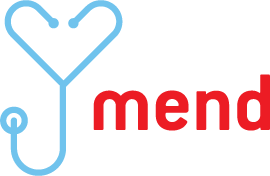
5 Things We Did to Meet the COVID Challenge: Advice from Mend
By:
John Seitz, Chief Growth Officer, Mend
Brandon Lassiter, Chief Technology Officer, Mend
Lauren Howard, VP Client Services, Mend
In early March, the Mend team was preparing to attend our first HIMSS International Conference. At that time, we had about 2,400 physicians and providers on our patient engagement and telehealth platform. Within weeks, our industry was faced with not only the challenge of diagnosing and treating highly infectious patients but also in treating non-COVID patients for both acute and chronic conditions. During this time, Mend responded with people, products and resources. We introduced MendNow that allowed practices to be up and running in minutes and we tuned MendPro to meet the demands of larger, integrated workflows. After just 3 months, we are helping over 10,000 providers connect with their patients.
As a technology provider, and a committed HIMSS member, we wanted to share our process and our “mind set” for meeting this incredibly unique challenge.
- We set up distributed service request where the whole team can jump in and help as needed
Mend’s support and implementations teams work together to provide complete support for all users on the system regardless of the situation. Implementations team members are available to provide support when necessary. The support team is structured with agents and leads, which permits them to have additional responders when necessary. The escalation structure creates the ability for front-line staff to escalate tickets and concerns to lead users who can then take ownership for the interaction. This permits us to scale users quickly as front line agents can focus on low acuity solutions while leads manage higher acuity issues and customer satisfaction issues.
- We had established processes to on-board people fast, allowing us to hire people as needed
Mend’s support program grows based on the number of active providers in the system, and our implementations and training team are scaled based on the size of new agreements. Our internal training programs make it possible to train new staff quickly and with standardized materials. By utilizing internal training tools, monitoring volume in all implementations teams and promoting from within, Mend is able to remain fully staffed.
- We continuously updated FAQs and our Knowledgebase for customers to get immediate self-help
Mend created a robust knowledge base that covers the entirety of the system as well as common troubleshooting issues that come up for patients, providers and staff. Our knowledge base is updated continuously, and it reflects any and all recent platform changes. Users can receive updates on recent changes, and they have full access to the knowledge base with their Mend login. The solution can be used as both a training tool as well as a troubleshooting resource.
In order to scale quickly, training tools have to be available in multiple modalities, and they have to be replicated quickly. Training options must be versatile and robust. Mend’s training options include live, virtual training that is customized to the workflow as well as customized recorded training and self-guided trainings. Our solutions can be branded to the organizations based on their preferences, or they can be provided as a full-platform overview in order to offer full access to the group. Mend’s clients may use one modality or many, but the customizable options are invaluable to a successful go-live. Each Mend user has different needs and availability. Training must meet users where they are, rather than requiring users to seek it out. By offering self-guided and recorded solutions, users with limited availability can train at their earliest convenience. Groups who are unable to coordinate large scale trainings or who have varied groups who may need access can provide that access in the way that is more valuable to them. Meanwhile, those who feel they will benefit most from question and answer trainings can schedule live virtual training with a Mend expert who can work through the workflow end-to-end and provide a complete recording at the conclusion. Successful users are highly dependent on adequate resources to support them from their first interaction with the system, and multiple training modalities enable success.
Similarly, self-service training permits immediate training for users who need to go live quickly, and it encourages individuals to find a simple yet HIPAA-compliant telehealth solution that can be implemented quickly. Clients who contact for immediate access can have organizations built and training provided same-day so they do not miss a vital minute of treatment time.
- We extended our hours of coverage
Mend’s support team is staffed any time there is a sufficient volume of scheduled appointments in the system. Mend regularly monitors volume to identify high volume times that will require additional staffing, and we scale to support that volume. Mend’s support utilization is low, and we base our staffing on the percentage of appointments that we expect to come into chat during that time period. Mend also offers offline email services that are forwarded for response when the chat is offline. These emails are then used to identify periods that require additional coverage.
- We set up email help for low urgency requests
Mend’s chat is supported by an offline email option that allows individuals to respond to notifications and send email requests when chat is not required. Those who need minor account changes, need help contacting someone on the staff, want to speak with sales or who have training or implementations questions that do not require urgent support can contact via email and receive a response within the same business day, often much earlier.
Bonus: It helps that we started with a technology that was built to scale
Having a scalable infrastructure is important. However, a scalable codebase and database schema is far more important. If you needed more capacity today, what would you do? Do you have multiple levers to pull in order to handle concurrent application and database load? Load testing can help identify areas of weakness in scalability so you can be prepared for a sudden increase in demand.
If something were to go wrong with an application, database, or server, how would you know? Would a user alert you to the issue or would you know about a problem before the problem occurs? Investing time to set up proactive thresholds across all mission critical components combined with 24/7/365 monitoring should allow the team to react before an outage or slowdown can occur. Look to set up alerts and triggers to catch symptoms, not problems. For example, CPU, memory, concurrent connections, speed, and more can be monitored. Instead of waiting for a problem to issue an alert, create alerts when utilization or metrics go outside of normal ranges.
We hope these lessons can serve your organization as we all continue to face new and ever-increasing challenges. For additional information, contact us at john@mendfamily.com





